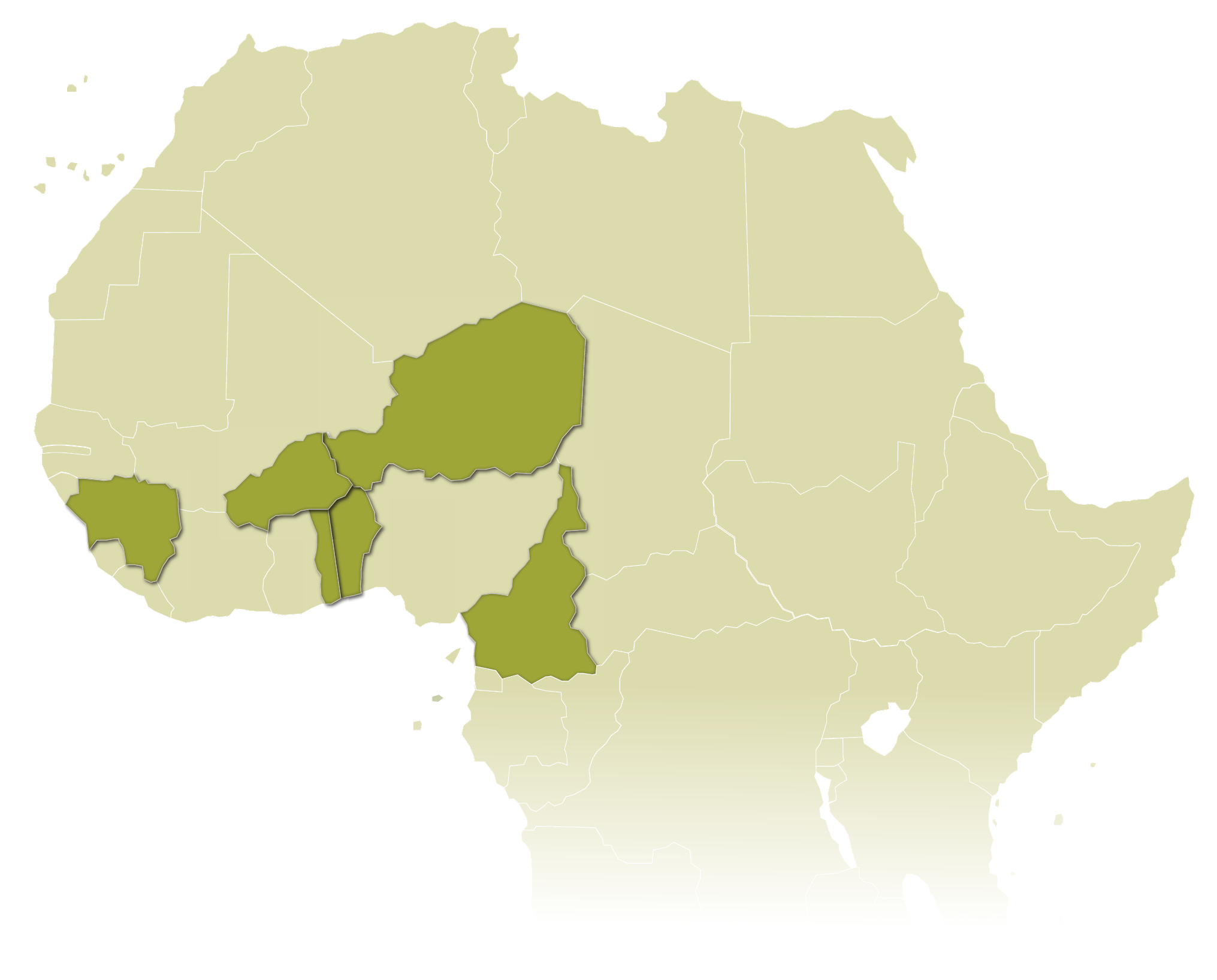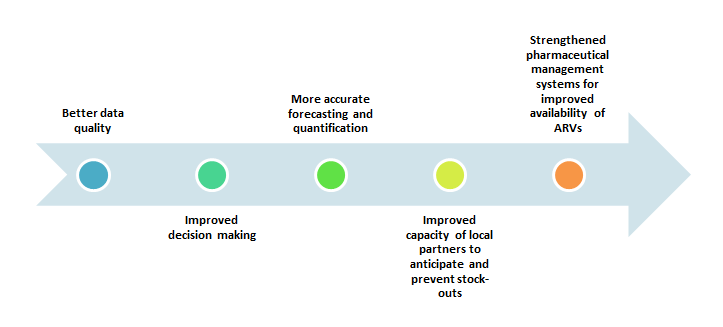Project Dates: 2013 – 2017

Background
Sub-Saharan Africa is widely affected by HIV and AIDS; however, the West and Central African regions have a low HIV prevalence. The low number of patients on antiretroviral therapy (ART) and limited technical and financial support have led to frequent stock-outs of antiretrovirals (ARVs), posing a serious risk to patients and increasing the risk of HIV drug resistance.
In response to these challenges, USAID’s West Africa Regional Office, through SIAPS, supported regional coordination mechanisms and the development and implementation of an early warning system (EWS) for HIV- and AIDS-related commodities in six focus countries: Benin, Burkina Faso, Cameroon, Guinea, Niger, and Togo.
SIAPS worked with national HIV and AIDS control programs to:
- Promote a more coordinated approach to HIV and AIDS commodity management
- Enhance the collection, analysis, and use of supply chain data
- Increase the use of pharmaceutical management information for informed decision making
- Strengthen capacity for pharmaceutical supply management
Project Highlights
In 2014, SIAPS conducted a situational analysis in Burkina Faso, Cameroon, Guinea, Niger, and Togo to gain an understanding of the countries’ capacity for HIV and AIDS commodity management and supply and to assess the commodities information management systems. The assessment revealed gaps in data generation, transmission, and use of patients and commodity information. These gaps contributed to the poor use of information for decision making. Three of the five countries reported stock-outs in the six months prior to the assessment.
To overcome the challenges of HIV and AIDS commodity data flow and management, a dashboard was recommended for compiling, analyzing, and disseminating information.
Results
The systemic approach used to implement OSPSIDA improved the availability of pharmaceutical management information for timely decision making in Togo, Benin, and Cameroon. In Togo, the reporting rate increased from 20% in June 2014 to 37.5% in September 2014 and reached 100% in December 2014; it has been stable at 100% since September 2015. The dashboard allows the country to assess stock status at all levels, which was not possible before OSPSIDA. The consumption data in Togo integrate peripheral- and national-level data, providing a more accurate status of stock of commodities available for patient care nationwide and projecting the risk of stock outs.

In 2014, 71% of ARVs in Togo were at high risk of stock-out at the national level, putting 96% of patients at high risk of treatment interruption. The risk of stock-outs decreased to less than 1% by November 2015 with support from SIAPS. Deploying OSPSIDA in Togo has significantly enhanced the visibility of supply chain data for timely and evidence-based decisions, thereby contributing to the increased availability of HIV/AIDS products.
Generating Quality Data to Improve Pharmaceutical Services and Patient Care
Results from EDT supervisory visits in Togo continue to show improved data quality through key indicators, with 100% concordance between EDT records and prescriptions at each dispensing site. SIAPS is working with the PNLS to roll out the EDT nationwide.
Project Legacy
From the beginning, SIAPS/West Africa embedded sustainability in all activities by facilitating ownership by regional and national institutions.
- SIAPS involved WAHO and key stakeholders in procurement and supply management at the country and regional levels in the design of OSPSIDA. A transition plan to hand over management of OSPSIDA to WAHO was developed that included defined stakeholder roles and responsibilities as part of its Buffer Stock Initiative.
- After the deployment of OSPSIDA, Togo, Benin, and Cameroon have updated data and have used reports from OSPSIDA.
- Togo has developed a pool of trainers and EDT super users to monitor the implementation and nationwide scale up of the EDT.
- All materials for replication of the EDT in other countries are available.
- Budget constraints and in-country preparedness to change systems limited the capacity of the project to ensure implementation of this concept in all countries. The countries that have not adequately optimized this concept can still learn from the achievements of the PNLS.

